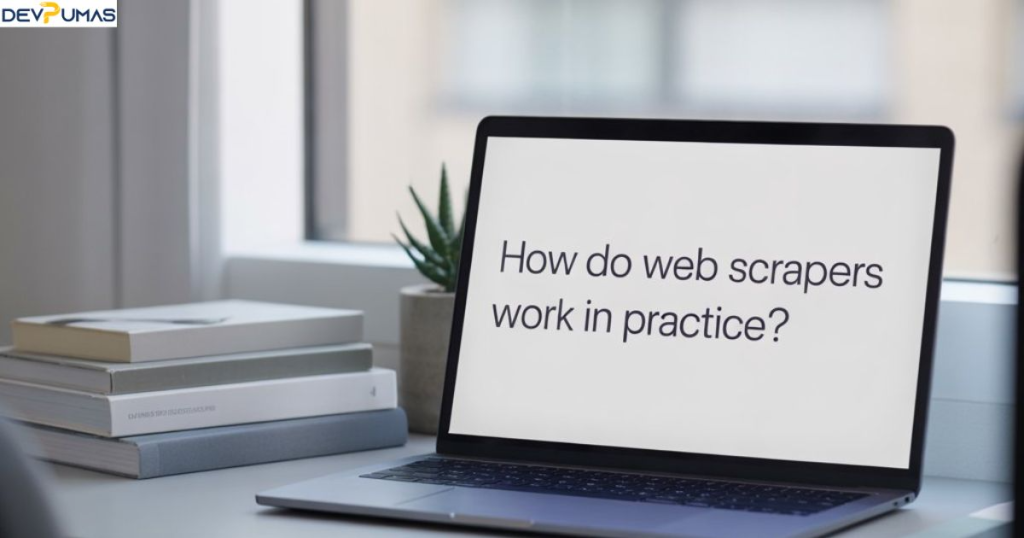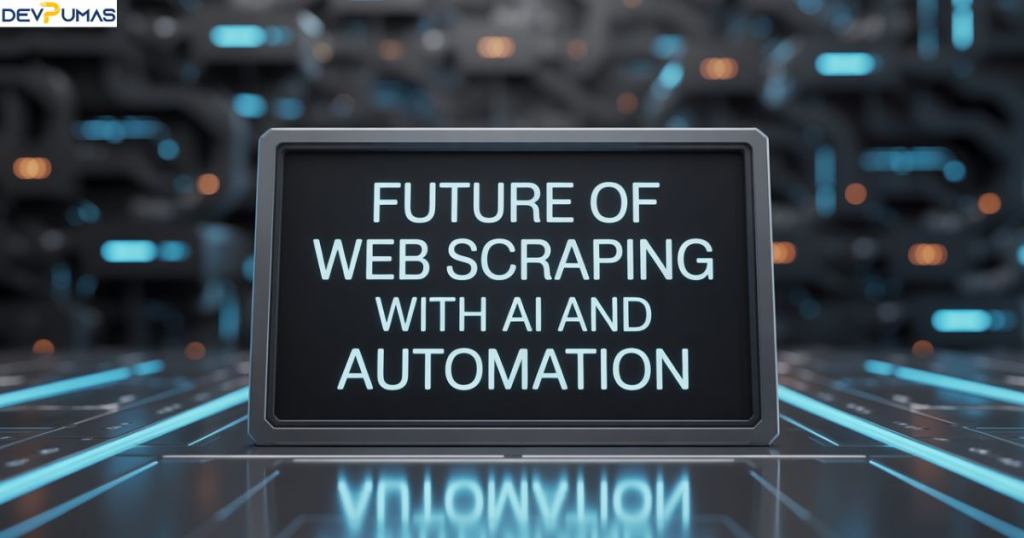Introduction
In today’s digital economy, data is the fuel that drives smarter decisions. Businesses in the UK and worldwide rely on Web Scraping to collect real-time insights, improve performance, and stay ahead of competitors. This process has moved far beyond simple bots. In 2025, it combines AI-driven automation, real-time data analysis, and cloud computing to deliver information at scale. By understanding how Web Scraping works and how it can be applied across industries, companies gain a sharper competitive edge, stronger customer connections, and more efficient operations.
What is Web Scraping?
Web Scraping is the process of extracting structured information from websites automatically, instead of doing it manually. The technique allows businesses to collect data on products, services, competitors, or customer reviews and then turn it into actionable knowledge. Unlike using APIs, which require permission, scraping works even when no official access exists.
It has become essential because organisations depend on IoT data collection and processing, secure mobile connectivity, and real-time data analysis to understand consumer behaviour. In 2025, the ability to scrape data at scale and combine it with AI-driven IoT applications is reshaping industries.
Key Benefits of Web Scraping for Businesses
The biggest benefit of Web Scraping is its ability to save time and resources. Instead of manually gathering thousands of pieces of data, a scraper automates the process and delivers results in seconds. For UK businesses, this means better market research, more accurate financial predictions, and improved data-driven decision making.
It also provides personalized mobile experiences, stronger retail IoT personalization, and deeper insights into consumer needs. For example, an e-commerce brand can track competitor pricing daily, while a financial firm can monitor stock fluctuations instantly. The outcome is faster reactions, smarter strategies, and improved profitability.

How Do Web Scrapers Work in Practice?
A scraper doesn’t just copy text from a website. It follows a sequence of steps that make the data clean, structured, and useful. The process starts with crawling web pages, extracting the required content, parsing it into structured formats like JSON or CSV, and then storing it in a database.
Modern scrapers in 2025 use edge computing in IoT, encryption and authentication, and advanced APIs and IoT protocols to make the process faster and more secure. They also integrate with cloud computing in IoT to deliver large volumes of information in real time.
Different Types of Web Scrapers Explained
There are many types of scrapers available, each built for specific needs. Browser-based scrapers are simple tools that extract information directly from web pages. Cloud-based scrapers are more advanced and allow users to scale data collection without worrying about hardware limits. Custom-built bots are developed for highly specific projects like scraping agriculture IoT applications or supply chain optimization data.
Another important category is hybrid app development scrapers, which run smoothly across platforms and integrate with cross-platform IoT apps. Each type offers unique strengths, and the choice depends on the complexity and size of the project.
Common Use Cases of Web Scraping in Real Life
The applications of Web Scraping go beyond simple research. Retailers use it to monitor competitors, hotels use it to adjust pricing dynamically, and farmers rely on smart farming technologies to track agricultural data. Healthcare providers employ IoT in healthcare (IoMT) to collect patient information, while car manufacturers use automotive IoT integration to improve vehicle performance.
In the UK, transportation and logistics IoT depends heavily on scraping for telematics and navigation systems, ensuring routes are optimised. Businesses across finance, education, and travel also integrate scraping to strengthen IoT-based automation and gain an edge in rapidly changing markets.
Best Tools and Technologies for Web Scraping
The market offers both free and paid scraping tools. Popular frameworks like BeautifulSoup, Scrapy, and Puppeteer remain highly reliable for developers. On the other hand, commercial platforms such as Octoparse and ParseHub simplify scraping with user-friendly interfaces.
To compare different tools, consider their scalability, pricing, and features.
| Tool | Type | Best Use Case |
| BeautifulSoup | Open-source | Small-scale scraping with flexible coding |
| Scrapy | Open-source | Large-scale data collection |
| Puppeteer | Open-source | Rendering JavaScript-heavy sites |
| Octoparse | Paid | Non-developers who need easy UI |
| ParseHub | Paid | Cross-platform scraping with visual interface |
Challenges and Limitations of Web Scraping
While Web Scraping offers endless opportunities, it comes with challenges. Many websites use anti-bot technology, CAPTCHAs, and IP blocking to prevent scraping. This makes automation harder unless businesses invest in advanced solutions like NFC and RFID connectivity or rotating proxies.
Legal and ethical issues are another limitation. Companies must respect data privacy and follow compliance laws. Poor data quality, duplication, and lack of accuracy are also common problems. Without proper cleaning, scraped information can lead to wrong decisions.

Future of Web Scraping with AI and Automation
The future of Web Scraping is tied to AI-driven IoT applications and automation. Instead of collecting raw data, scrapers in 2025 are able to interpret patterns, detect consumer sentiment, and predict future trends using machine learning.
Voice-enabled IoT apps, retail IoT personalization, and IoT-powered fitness solutions will all rely on automated scrapers. With the growth of 5G-powered IoT apps, data collection will be faster and more reliable, opening new opportunities for businesses worldwide.
How can DevPumas help you?
At DevPumas, businesses in the UK can access tailored Web Scraping services designed for efficiency and compliance. The team builds custom scrapers, integrates with IoT mobile app development, and provides solutions for e-commerce automation, healthcare IoT solutions, and supply chain optimization.
By combining expertise in AI-driven IoT applications and secure mobile connectivity, DevPumas ensures that data collection is seamless, accurate, and future-ready. This allows businesses to focus on strategy while the heavy lifting of data extraction is handled with precision.
FAQs
1. Is web scraping legal in the UK?
Web scraping is legal if the data is public and not protected by copyright or login barriers. Always respect website terms and privacy laws to stay compliant.
2. What are the main benefits of web scraping for businesses?
The biggest benefits are saving time, cutting costs, and getting real-time insights. It helps with price monitoring, market research, and competitor tracking.
3. Which industries use web scraping the most in 2025?
E-commerce, finance, healthcare, travel, and logistics rely heavily on scraping. These industries use data for automation, personalization, and smarter decision-making.
4. Can I scrape websites without coding knowledge?
Yes, you can. Tools like Octoparse and ParseHub make scraping simple with drag-and-drop interfaces, perfect for beginners without coding skills.
5. What challenges come with web scraping?
The main challenges are blocked IPs, CAPTCHAs, and messy data. With smart proxies, automation, and cleaning methods, these can be handled efficiently.
Conclusion
In 2025, Web Scraping has become an essential part of business growth. From collecting competitive intelligence to powering IoT-enabled mobile apps, it continues to transform how companies make decisions. While challenges exist, advanced automation and AI are making scraping more effective and secure.
For UK businesses, partnering with experts like DevPumas means unlocking the full potential of Web Scraping and turning data into actionable intelligence.


